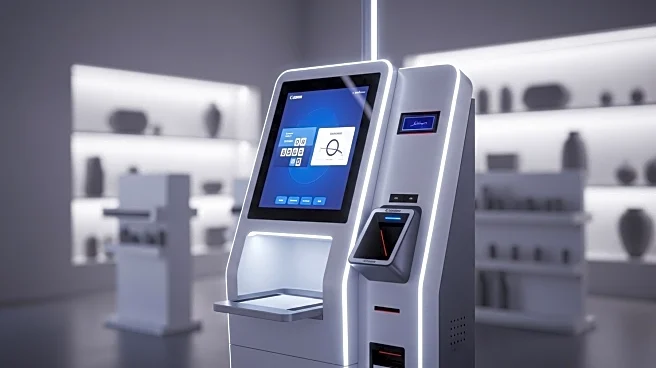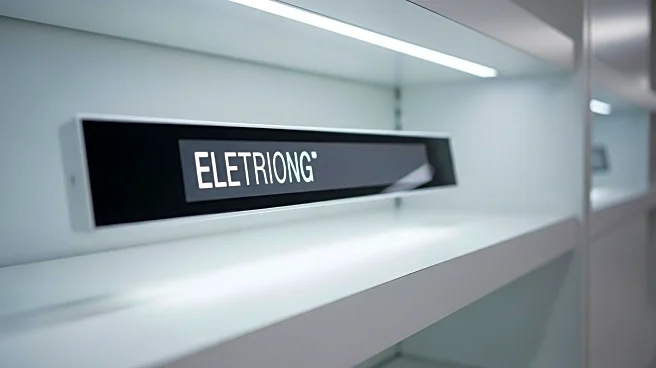What's Happening?
The self-checkout systems market is poised for significant growth from 2025 to 2033, driven by technological advancements and changing consumer preferences. Key players in the market, such as Toshiba Tec Corporation and NCR Corporation, are focusing on product development and strategic investments to enhance self-checkout solutions. The market is segmented by components, mounting options, and end users, with supermarkets and hypermarkets being major adopters. The report highlights the competitive landscape, investment strategies, and regional market dynamics, with North America and Europe leading in adoption due to technological maturity and consumer demand.
Why It's Important?
The growth of the self-checkout systems market reflects a broader trend towards automation and convenience in retail. For retailers, these systems offer cost savings, improved efficiency, and enhanced customer experience. Consumers benefit from faster checkout processes and reduced wait times, aligning with modern shopping preferences. The expansion of self-checkout solutions is likely to influence retail industry standards, prompting further innovation and adoption of automated technologies. As the market evolves, stakeholders must address challenges related to security, user experience, and integration with existing systems.
What's Next?
The self-checkout systems market is expected to continue expanding, with advancements in hardware and software solutions. Retailers may focus on integrating AI and machine learning to enhance system capabilities and improve customer interactions. As adoption increases, companies may face competition from emerging technologies and new market entrants. The industry will likely see ongoing investment in research and development to address security concerns and optimize system performance.
Beyond the Headlines
The rise of self-checkout systems raises questions about the impact of automation on employment and consumer behavior. As retailers adopt these technologies, they must consider the implications for workforce dynamics and customer service standards. The shift towards automated solutions may also influence retail design and layout, prompting changes in store operations and management practices.











